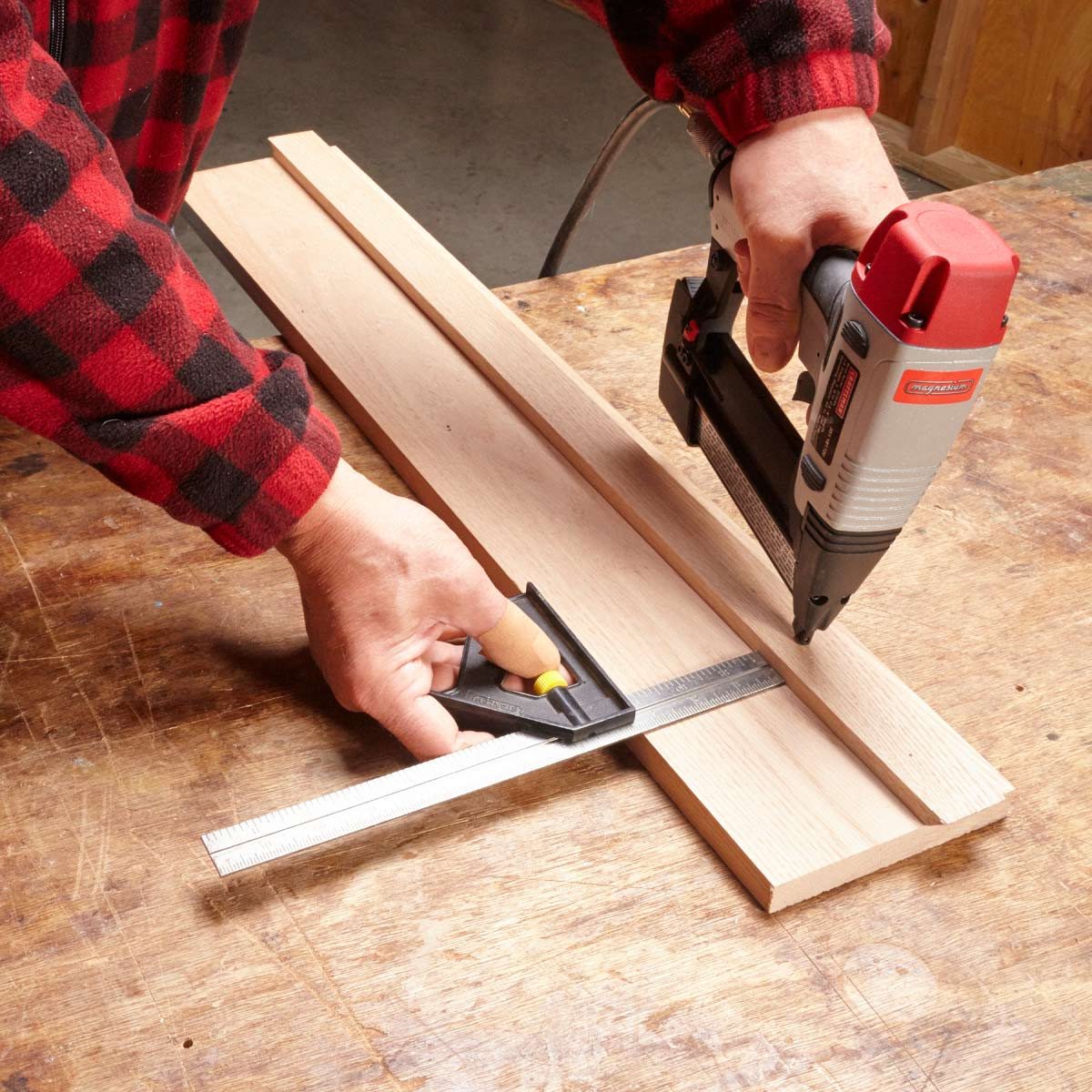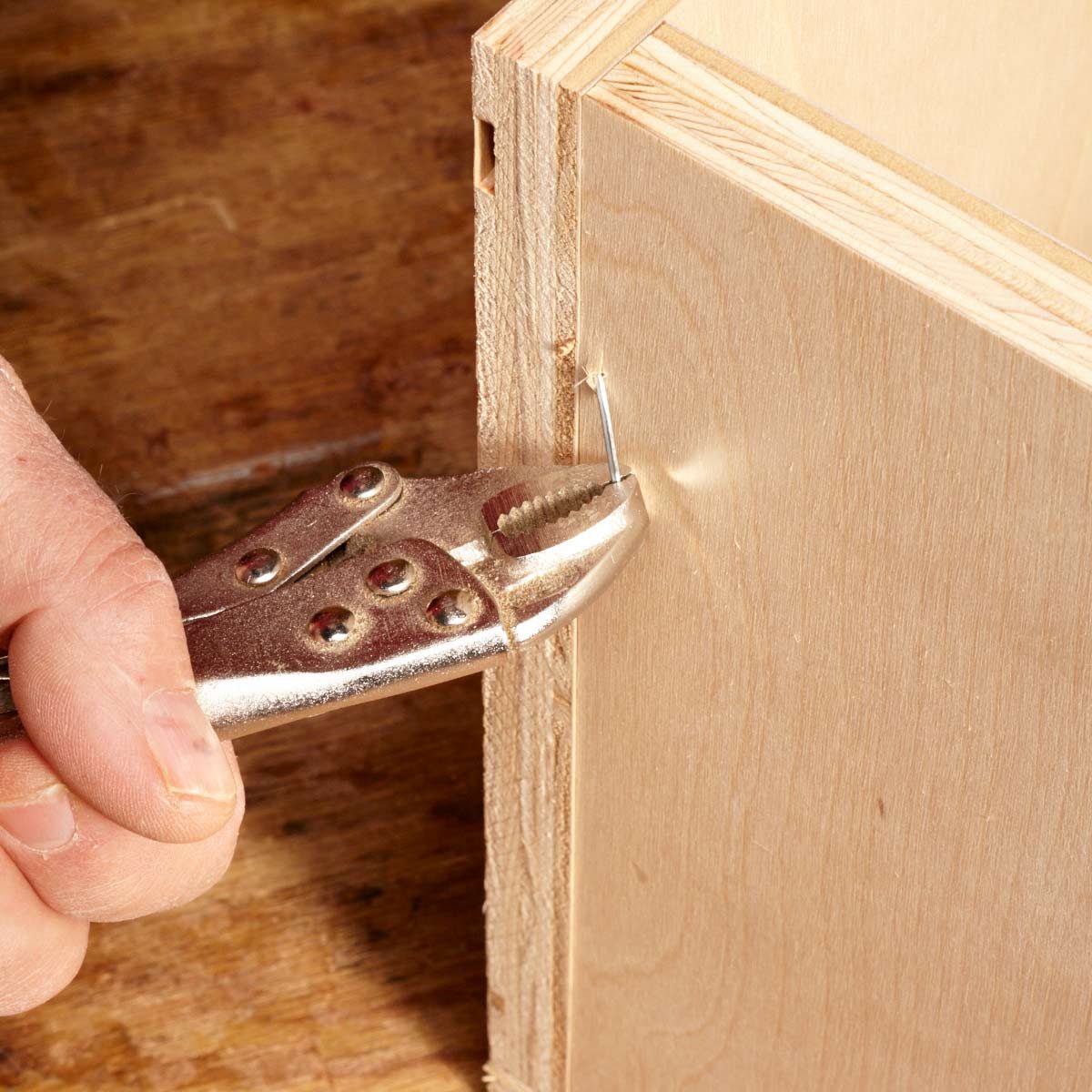Tack trim for marking
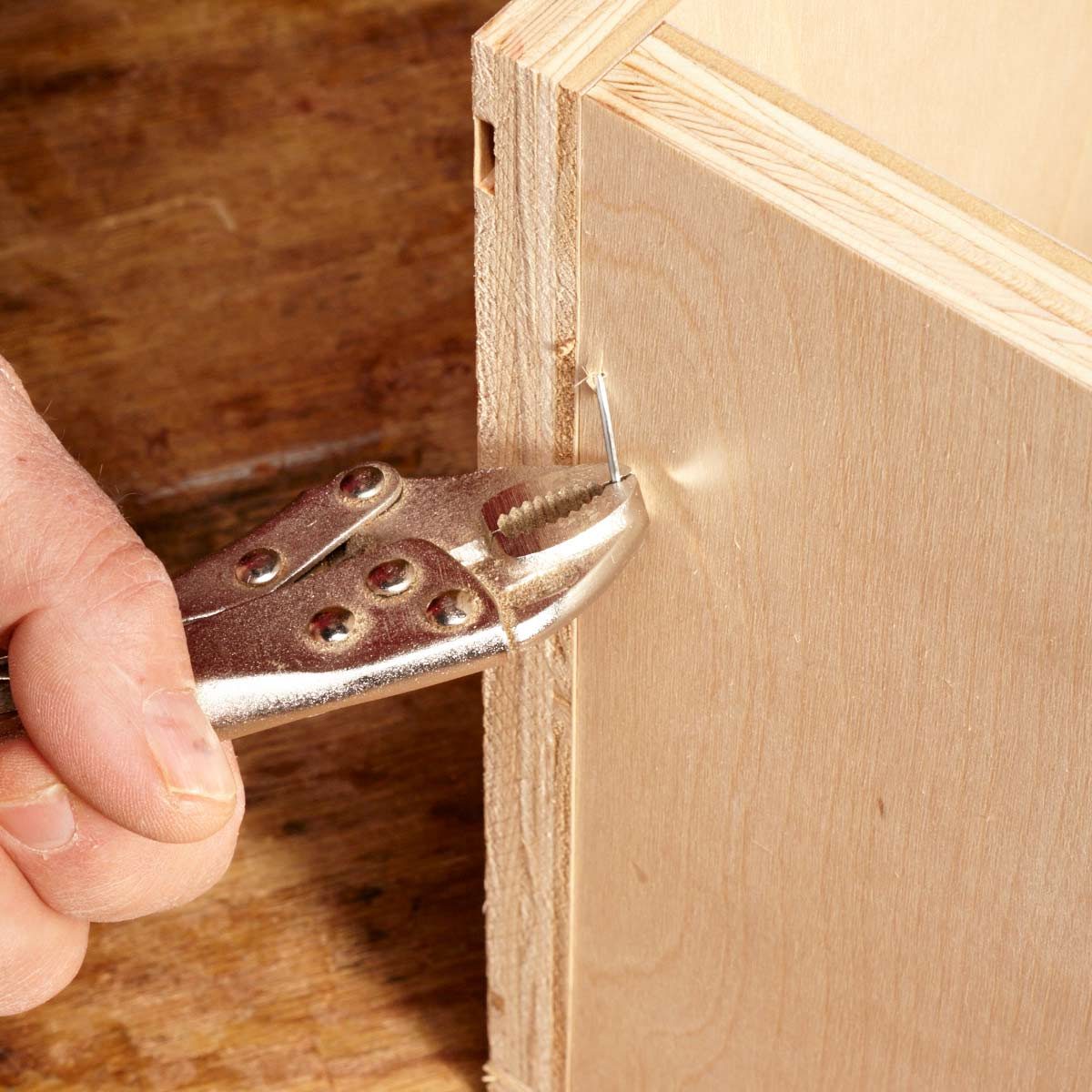
To eliminate measuring errors, I like to hold trim in place to mark the length. When the piece is too long to hold alone, I tack one end to the wall with a brad nail. Then I mark, yank the trim off the wall and remove the brad. (I use nippers to pull the brad through the back of the trim to avoid damaging the face of the trim.) That gives me an accurate cutting mark and only one extra nail hole to fill later.
No stud? No problem
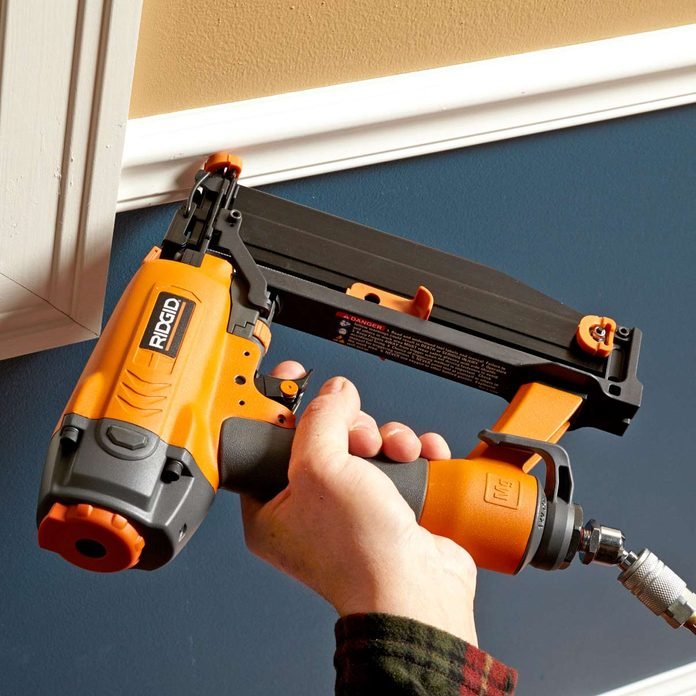
Studs aren’t always located where we need them. When I need to nail trim where there’s no stud, I dab some construction adhesive on the back of the trim and then drive nails into the drywall at 45-degree angles. That holds the trim tight against the wall while the adhesive cures. This “trap nailing” technique works fine with brad nailers and even better with finish nailers.
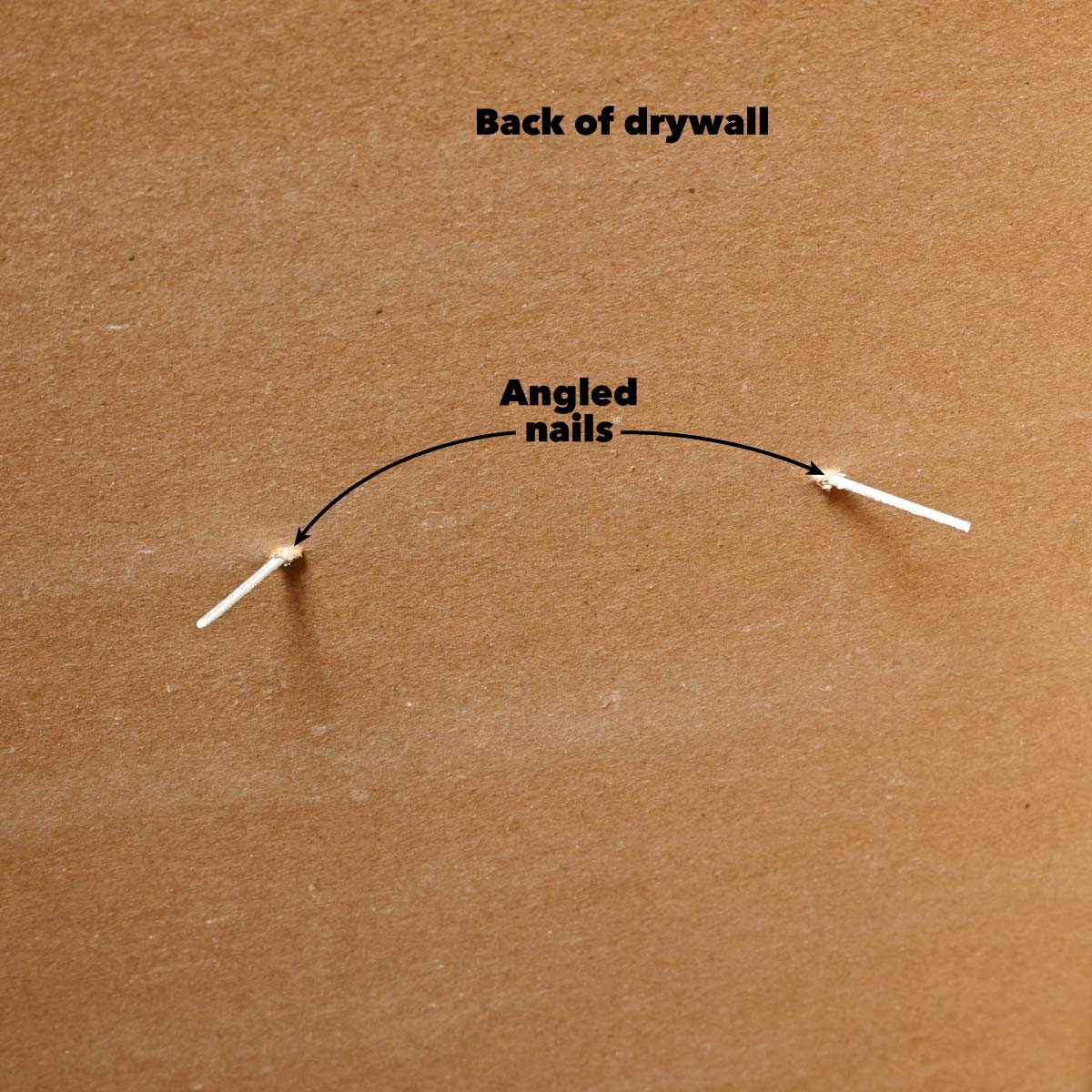
Extend your reach

Starting a nail with a hammer takes both hands and that limits your reach. So I used to spend more time moving my ladder than driving nails when I was installing crown moulding. A trim nailer, on the other hand, lets me reach way over to shoot a nail. And using a bench, rather than a ladder, lets me nail off even the longest runs in only two or three moves.


